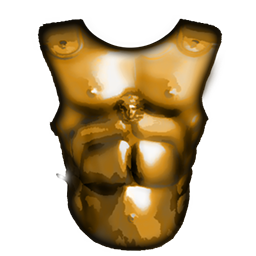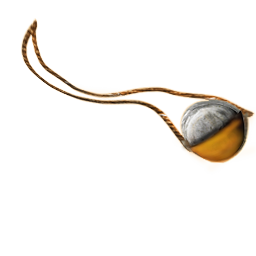-
Posts
25.684 -
Joined
-
Days Won
300
Everything posted by Lion.Kanzen
-
.thumb.png.ce58cea22940c255f5b0a735d5abee36.png)
===[COMMITTED]=== Seleucid Structures
Lion.Kanzen replied to LordGood's topic in Completed Art Tasks
@SeleucidKing generic greek was athenian temple, Seleucid is unique. -
.thumb.png.ce58cea22940c255f5b0a735d5abee36.png)
==[Task]== Tiny icons set (simple)
Lion.Kanzen replied to Lion.Kanzen's topic in Eyecandy, custom projects and misc.
I need improve the range icon... But is better resolution than original by wraitii's mod may be without arrow...- 79 replies
-
- 1
-

-
- lion.kanzen
- gui
-
(and 3 more)
Tagged with:
-
.thumb.png.ce58cea22940c255f5b0a735d5abee36.png)
==[Task]== Tiny icons set (simple)
Lion.Kanzen posted a topic in Eyecandy, custom projects and misc.
based in Wraiitis mod for the GUI I will make some icons and here a work in icons for patches. if you have a request let me know.- 79 replies
-
- lion.kanzen
- gui
-
(and 3 more)
Tagged with:
-
.thumb.png.ce58cea22940c255f5b0a735d5abee36.png)
Channel screen/intro help with Blender
Lion.Kanzen replied to Phalanx's topic in Introductions & Off-Topic Discussion
It's better... -
Source http://europabarbarorum.wikia.com/wiki/Boii_Donno_Eporedoi_(Boii_Noble_Cavalry) Boii Donno Eporedoi (Boii Noble Cavalry) Boii Donno Eporedoi (Boii Noble Cavalry) These cavalry are the finest in the Boioi nation. Well trained and with high morale they can be expected to defeat most opponents and hold their ground in a melee. Description The ground thunders. Beneath a torrent of hooves and steel the earth trembles. The horsemen of the Boioi, their steeds froth at the mouth, spit lapping from their bridles, their chests heave with muscle like the tides of far off lands. The Boioi riders, great men with greater valour goad their mounts onward, iron spears levelled, gripped in an iron vice. Clad in mail and helmets which glint beneath the immortal rays of the sun they ride, irresistible, indomitable, unstoppable. With the speed of lightning they ride, like a thunderclap they smash into the ranks of the foe, and like a raincloud the enemy is ripped asunder, the battlefield flooded with men running terrified from these awesome riders. Historically cavalry appears to have become an increasingly important component of Keltoi armies from the 3rd century BC onward, based on changes observed in the archaeological record. These include an increase in the amount of armour being worn, new helmet designs which offered better all round protection and changes in armament, namely increasingly long spears and swords, all of which appear to have been associated with an increase in the number of cavalry at this time. In the historical records from this period we also find increased mention of cavalry in Keltoi armies. At battles such as Telamon in 225BC and at Cannae in 216 BC large numbers of cavalry were being fielded, whilst the Gallic invasion of Greece in 279 BC reportedly contained 24,400 cavalry, although such numbers are no doubt exaggerated. The archaeological evidence demonstrates that the above mentioned developments in armour and weaponry were very much a feature of the Keltoi of Central and Eastern Europe as much as they were the populations of Gaul, indeed it could be argued that some of these developments actually began in Eastern Europe based on the existence of a type of scabbard decoration, known as "Hungarian Sword Style" which originated in this region and coincided with further lengthening of swords. Such 3rd century BC swords are well attested to in this part of Europe, like the beautiful examples from Bölcske in Hungary and Batina in Croatia. Likewise there was also an evolution in helmet styles in this part of Europe at this time with earlier, more ornate helmets such as the example from Silivas in Romania, being replaced by less ornate, more heavily reinforced types. Examples of helmets produced by the Eastern Keltoi which date to this include the Batina example from Croatia, which has the central and eastern feature of triangular iron reinforcements riveted to the side of the crown. There also exists from this time helmets which incorporate both the more practical designs of later helmets as well as ornate decorations applied to the earlier types. Arguably the most striking example of this is the Ciumesti helmet from Romania, which is similar to the Batina example but is adorned with a large bird of prey, complete with wings which moved when the wearer ran. By the 1st century BC the Keltoi of the east were producing strongly reinforced iron helmets which provided excellent all round protection. Just as with weapons of this period these Late Iron Age examples occur in the same types as those which were being produced in Gaul at this time. Examples of such helmets include the Agen type example from Cugir in Romania, a Port type helmet from Mihovo in Slovenia and a type of Novo Mesto helmet from Sava in Croatia, dated to the 1st century BC. The emergence of oppida in Eastern and Central Europe, which actually occurred at an earlier date than happened in Gaul, would have served to increase the quantity of such types of arms and armour. At oppida such as Závist in the Czech Republic, Manching in Germany and Bratislava in Slovakia, the concentration of various artisans made it possible to mass produce metal items on a much greater scale than had previously been possible when such craftspeople were dispersed over the landscape. In addition to the establishment of the proto-urban oppida at an earlier date, the Keltoi of Eastern and Central Europe enjoyed a further advantage compared to their Western cousins in that their location gave them access to larger breeds of horse, principally in the form of animals imported from Skythian tribes then living in the Hungarian plain. Although not every Skythian horse was markedly larger than those horses found in the west, for example at the Skythian site of Pazyryk, in the Altai mountains, the majority of horses were about the same size as a Przewalski's horse, there were some individuals which were larger by about 10cm than those animals to be found in Western Europe at this time. Classical accounts tell us that the Italic Veneti often imported the larger Skythian breeds (and indeed they can be found in some Veneti graves). Likewise the Keltoi of Central and Eastern Europe appear to have imported Skythian horses. At the oppidum of Manching in south east Germany, for example, horses have been recovered which vary in size from 1.12m at the withers to the larger specimens which are 1.38m at the withers.
-
Sorry the forum don't let me edit so much. http://hailcaesarfrance.forumactif.org/t229-essai-de-regles-pour-les-gaulois-termine here I found specific names source. @stanislas69 can you help me with French language here. _______________________________________________________________________ http://teutalingonescinghialebianco.forumfree.it/?t=49144501 is in Italian but looks useful. is a word reference from Celtic lang.
-
Argoi (Nobles) The Argoi fight on foot with the best equipment money can buy: a fine quality longsword and the Gaesum, a sturdy war spear. Each soldier has a bronze Montefortino helmet, richly decorated and adorned with a plume, as well as a large shield painted with colourful patterns. Many can also afford to wear body armour of some sort, usually consisting of a hardened leather cuirass or simple mail shirt extending down to below the waist.
-
The name must be Brihentin Gallic Brihentin (Bree-hen-ten; "Knights") are heavy cavalry. They are used as shock cavalry to break an enemy position and destroy flanks, as well as overrun heavy infantry and slaughter lighter cavalry. Their spears, swords, and chain armor is all of finest quality, and their skill is great, though they are, as any cavalry, vulnerable to long spears and pikes. They can be used to best effect for riding down enemy heavy infantry and defeating light cavalry. Their armor can absorb many blows, and that should allow them to keep fighting. Historically, the Gauls employed heavy cavalry as a method of breaking dense enemy formations, and were sometimes employed by Carthage, in addtion to various Gallic chiefs and kings. They were apparently of great enough skill to impress their employers; Hannibal grouped his Gallic heavy cavalry with his Iberian heavy cavalry during his campaign in the Italic peninsula. Such warriors would cost much to outfit, but they would surely be worth everything spent to ensure they had the best possible equipment.
-
Gallic Brihent must be have a term because is a specific name into the game.
-
Its fine for me. We can mix the name with greek if we can't found an accurate name.
-
What you mean ? all can try to help, the project is open.
-
.thumb.png.ce58cea22940c255f5b0a735d5abee36.png)
===[COMMITTED]===Temple of Capitoline Jupiter (wonder)
Lion.Kanzen replied to Tobi95's topic in Completed Art Tasks
Perfect, I will take screenshots , now @Enrique have some time may be can get a look for this. -
@Enrique if You can streaming in YouTube can be nice. And if You have the list which animations are already done can be nice too, to get an idea.
-
If you are using Windows http://windows.microsoft.com/en-us/windows-10/open-snipping-tool-and-take-a-screenshot
-
.thumb.png.ce58cea22940c255f5b0a735d5abee36.png)
===[COMMITTED]===Temple of Capitoline Jupiter (wonder)
Lion.Kanzen replied to Tobi95's topic in Completed Art Tasks
@wowgetoffyourcellphone Could you add this building to your mod? I want to see it if is enough good as I saw in the image. -
I prefer switch than toggle.
-
I like that, can be easy to implement ?
-
@wowgetoffyourcellphone Beatiful artwork
-
if Millennium covers 1000 years after 500 A.D Aristeia covers the same approximately BC. its about the late Bronze Age, is part council of modder pack( mods) is about New Kingdom Egypt, Neo Babylonian Empire, Neo Assirian, Minoans, Nubians, Sea People, Phoenicia, Kingdom of Israel, Etruscan culture, Mycenean Greece, Hittite Empire, and may be Quin culture.
-
.thumb.png.ce58cea22940c255f5b0a735d5abee36.png)
[Millennium A.D.] Brytenwealda 20 now available!
Lion.Kanzen replied to niektb's topic in Announcements
May be we can bring more if only focus in a single development. And some social media exposing. -
.thumb.png.ce58cea22940c255f5b0a735d5abee36.png)
[Millennium A.D.] Brytenwealda 20 now available!
Lion.Kanzen replied to niektb's topic in Announcements
I Try to come back to draw symbols to both factions. if you have in mind any other clue about a symbol for them share with me, even can open a topic for Germanic culture art.












